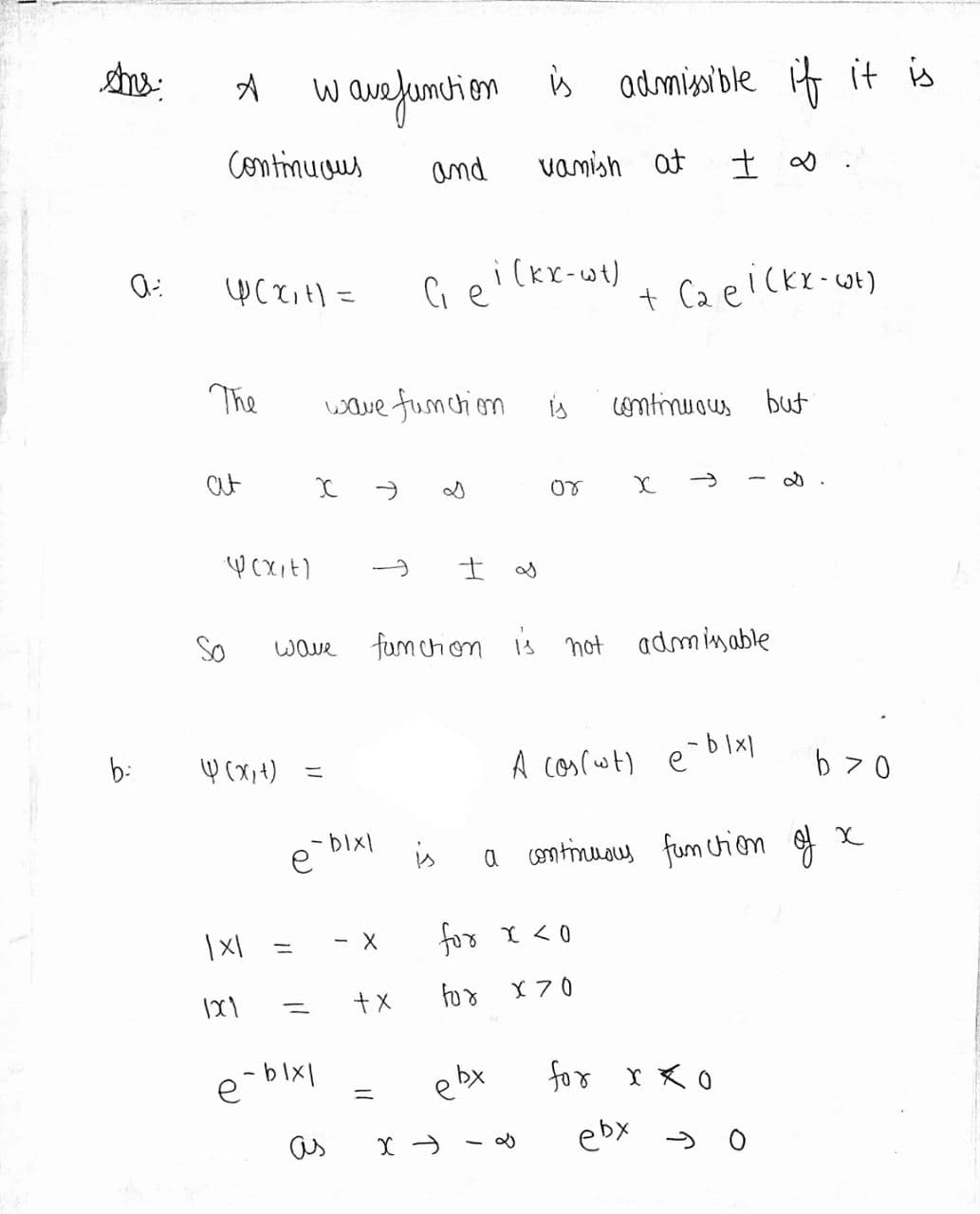4. For parts a, b, c state whether the given wavefunction is admissible or not and justify your answer. (a) Given (x, t) = Cei(kx-wt) + Cze-i(kxtwt) with C1 and C2 complex numbers and k real. (b) Given 4(x, t) = A cos(wt) e-blx| with A and b real, and b > 0. (c) Given y(x, t) = Ce-iate-alx| for -o 0. (d) Sketch the probability density associated with the wavefunction (x, t) defined in part (c).
4. For parts a, b, c state whether the given wavefunction is admissible or not and justify your answer. (a) Given (x, t) = Cei(kx-wt) + Cze-i(kxtwt) with C1 and C2 complex numbers and k real. (b) Given 4(x, t) = A cos(wt) e-blx| with A and b real, and b > 0. (c) Given y(x, t) = Ce-iate-alx| for -o 0. (d) Sketch the probability density associated with the wavefunction (x, t) defined in part (c).
Related questions
Question

Transcribed Image Text:4. For parts a, b, c state whether the given wavefunction is admissible or not and justify your answer.
(a)
Given y (x, t) = Cei(kx-wt) + Cze-i(kx+wt) with C1 and C2 complex numbers and k real.
(b)
Given 4 (x, t) = A cos(@t) e-blal with A and b real, and b > 0.
(c)
Given (x, t) = Ce-iwte-alx| for -o < x < 0, with C complex, a real and a > 0.
(d)
Sketch the probability density associated with the wavefunction p(x, t) defined in part (c).
Expert Solution
Step 1

Step by step
Solved in 3 steps with 3 images
